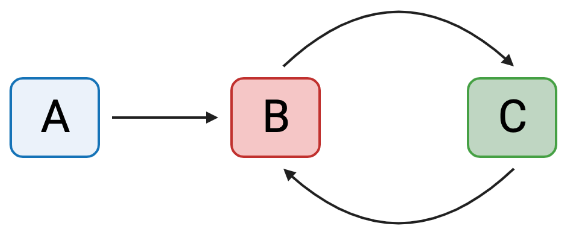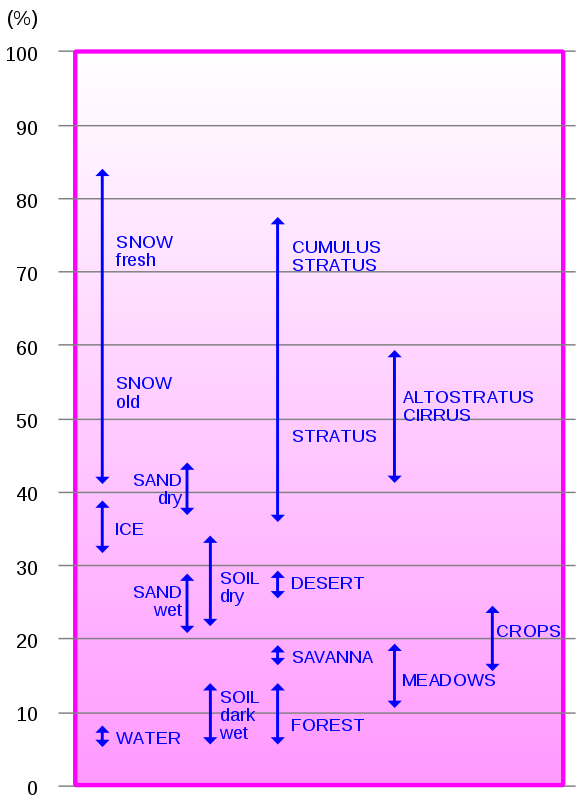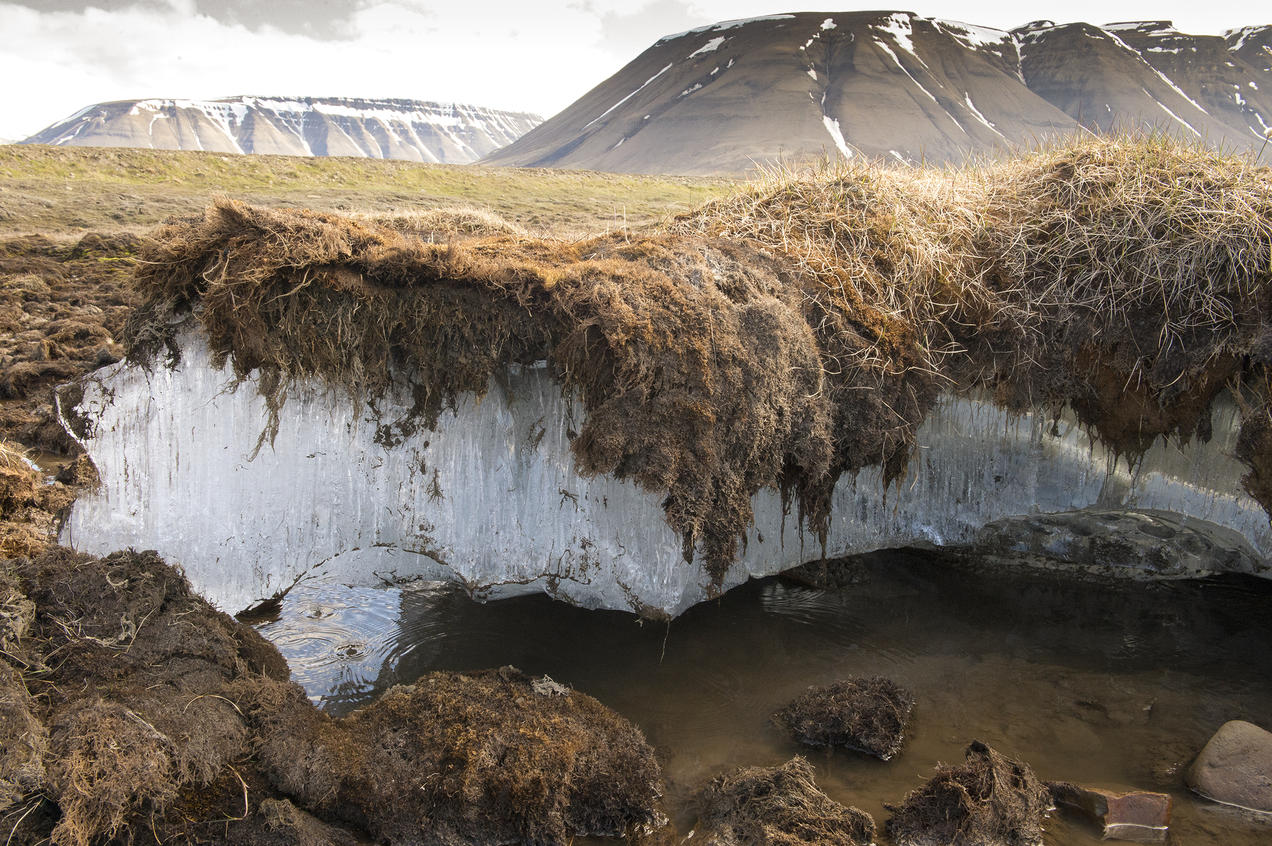Climate Feedback Cycles
In the last few years, we have witnessed a significant increase in weather-related disasters throughout the world. Droughts, wildfires, heat waves, hurricanes, and floods have all become more extreme. These are largely driven by increases in global temperature, which is caused by the huge amount of carbon dioxide (CO2) that humans have released into the atmosphere.
One of the most disconcerting aspects of climate change is that it is dependent on positive feedback cycles. In positive feedback cycles, parts of the system keep building on top of one other, instead of counteracting each other. This means that a small initial change can turn into a very large effect. In this post, I will discuss three significant positive feedback cycles that are driving climate change. Once started, many of these can not be reversed until the system reaches a new equilibrium, which means that we don’t have much time to slow climate change.

Figure 1: A simple positive feedback loop: A, B, and C are all part of a system. A is the initial change to the system, and when it increases, B also increases. When B goes up, C also goes up. C has the same positive effect on B, so the cycle keeps going even if no more A is added.
Ice and the Albedo Effect
Albedo measures how reflective an object is. It is the ratio between the amount of light reflected and the total amount of light hitting a surface. Reflective surfaces have higher albedo than absorptive surfaces. A completely reflective surface has an albedo of 1, or 100%.
White objects reflect sunlight, and dark objects absorb more sunlight. The graph below shows the typical albedo ranges (percent light reflected) of different parts on Earth. Different types of clouds (cumulus, stratus, cirrus, etc.) also have different albedo ranges.

Ice and snow reflect much more light than the dark-colored oceans. Because of the greenhouse effect, more sunlight is getting trapped in Earth’s atmosphere than is being reflected back out to space. This causes the average global temperature to increase, melting ice caps. As more ice turns into water, MORE sunlight is absorbed by the Earth. The cycle continues because more melting leads to more absorption, which further increases ice melting.
Averaged over the entire Earth, albedo has stayed relatively constant (sometimes higher or lower, but no obvious trends), but there are some regional trends. The albedo of the Arctic has gone down considerably because the Arctic is melting faster than the rest of the Earth. This will have a large impact on the climate system as well as on the people, plants, and animals that depend on Arctic sea ice for their survival or livelihood.
Melting Permafrost
The most frightening feedback loop relates to permafrost, ground that is frozen year-round. In the Northern hemisphere, 24% of the ground is permafrost. Permafrost can be a few feet or several miles thick, and it contains records of the Earth’s atmosphere in the past.

Figure 3. Melting permafrost in Svalbard, Norway. The top layer of thawed soil is called the active layer. It melts in summer and freezes in winter, while the soil below it remains frozen year-round. Source: Natural Resources Defense Council
The world’s permafrost contains around twice as much carbon as the atmosphere. The carbon is stored in plants and animals that died in the past. When organisms die, microbes break down the organic matter and release greenhouse gases into the atmosphere. In very cold climates, this process is effectively paused, and dead organisms remain frozen in the ground.
The process is restarted if the permafrost melts, which is occurring now as the Arctic warms. The frozen trove of carbon is melting, allowing microbes to access the organic matter within. The CO2 and methane, an even more potent greenhouse gas, that are being released accelerate global warming.
Melted permafrost also dries out and becomes ideal fuel for wildfires. These fires are typically ignited by lightning strikes, but the warmer, drier ground burns more easily than before. When organic matter is burned, it releases more greenhouse gases into the atmosphere that will continue the warming-melting-burning cycle.
Loss of Tropical Forests
Forests are important in several ways, including providing habitat for animals, natural resources, and clean air and water. Land plants perform photosynthesis and pull CO2 out of the atmosphere. Trees also exert a cooling effect that can buffer rising temperatures. In addition to providing shade, they release water from their leaves through a process called transpiration. This is analogous to sweating and cools the surrounding forest as the water evaporates.
Forests are in danger due to logging and climate change. Climate change makes the air hotter and drier in many parts of the world, increasing the risk of wildfires (other parts of the world get wetter because of how water is transported around the world). During increasingly severe droughts, wildfires are more likely to ignite and more likely to spread over vast areas of land.
In the past, tropical forests like the Amazon rainforest were carbon sinks that caused a net removal of CO2 from the atmosphere. Scientists tracked the relative absorption and emission of CO2 by the Amazon rainforest from 1983 to 2011 and found a decline in CO2 absorption. Parts of the Amazon are actually emitting more CO2 than they absorb, meaning that they are now carbon sources.
Paradoxically, even though more CO2 in the air makes trees grow faster, they grow so fast that they do not invest enough energy in defense mechanisms and therefore die younger. Warmer, drier forests are not only more susceptible to wildfires, but to disease as well. Many scientists believe that the Amazon has passed a tipping point – because large parts are emitting more CO2 than absorbing it, the Amazon itself will drive climate change that causes it to emit even more CO2. This same fate likely awaits the boreal forests, the forests surrounding the Arctic in Siberia, Canada, and northern Europe, because of the amplification of permafrost burning there.
Atmospheric Changes: Water Vapor and Jet Streams
The amount of water vapor (water as a gas) is dependent on the global temperature. Rising average global temperature affects water vapor in two primary ways:
- Increasing evaporation of water
- Increasing the amount of water vapor that the atmosphere can hold
Because the average global temperature is increasing, more water is evaporating, similar to how heating water causes it to boil and evaporate). Water vapor is another greenhouse gas, and it is responsible for 60% of greenhouse gas warming. This increase in water vapor in the atmosphere due to evaporation and the increased vapor capacity of a warmer atmosphere further heats up the Earth.
Jet streams are narrow bands of winds formed at the boundaries between air of different temperatures. There are polar jet streams between polar and temperate air and subtropical jet streams between temperate and tropical air. Because the Earth rotates counterclockwise, jet streams flow from west to east.
The Arctic is warming faster than the rest of the world, which reduces the temperature difference between polar air and temperate air, weakening the polar jet stream in the northern hemisphere. When the polar jet stream is slower and less intense, it can’t maintain its position in the high latitudes. It dips farther south and allows more warm air to move to the Arctic, increasing the pace of warming.
Conclusion
The Earth’s climate system is sensitive to certain changes because positive feedback loops amplify a small initial change. The Arctic is warming faster than anywhere on Earth, even faster than the Antarctic, and the consequent melting of permafrost and weakening of the jet stream accelerate the pace of warming. Heat and fire damage to tropical rainforests increases the chance of more forest loss as the temperature keeps increasing. The climate consequences of our actions today won’t be fully realized for decades, but by then, it will be too late to stop what has already been set in motion.
For More Information
- Check out some phenomenal videos about climate feedback cycles here.
- Read more about the polar vortex and how it differs from the polar jet stream.
- Why Antartic warming is less pronounced than Arctic warming.

Leave a Comment